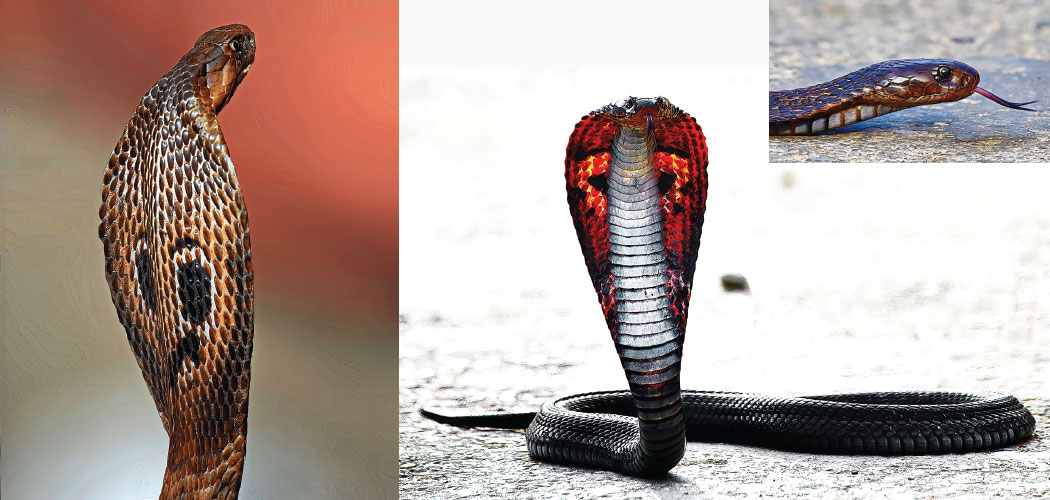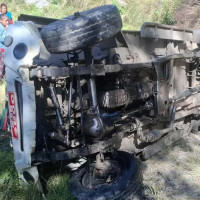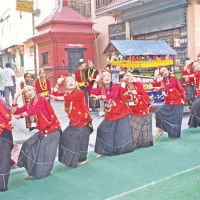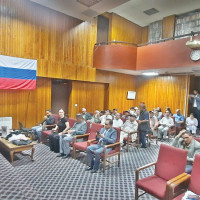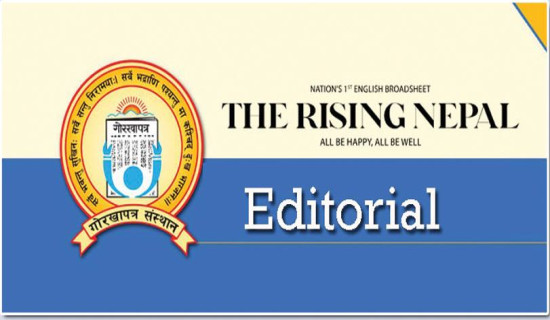- Wednesday, 22 October 2025
Spectacled Cobra: Risk And Cultural Importance
The spectacled cobra (Naja naja), also known as the common cobra or binocellate cobra, is a venomous snake belonging to the Elapidae family. In Nepali, it is called Goman Sarpa, and in Sanskrit, Nag. The cobra is active during summer and the rainy season. Its movement increased in warmer temperatures in search of food and mates. These snaes are ectothermic, relying on external heat to reguate thier body temperature. It is foudn in tropical forests, grasslands, agricultural fields and even near human settlements from 100 to 1,600 meters above sea level.
The cobra has unique hood which expands when thereatened, featuring a distinct spectacle- like marking-two connected circles resembling eyeglasses. It is recognisable traits of the species, althorugh it is not diplyed by all snakes. their color varies form yello2-brown to dark black, with lighter undersides and smooth scales. Adults typically measure 3.3 to 4.9 feet in length and weigh 2 to 3 kg. Their lifespan ranges from 24 to 32 years.
These cobras feed on small mammals, rodents, frogs, lizards, and occasionally other snakes or birds. They are opportunistic and may even scavenge dead animals. The breeding season runs from April to July, with females laying 12–20 eggs in hidden locations such as termite mounds or cracks. Unusually among snakes, the female guards the eggs until they hatch.
Venom from the spectacled cobra contains neurotoxins and cardiotoxins that affect the nervous and cardiovascular systems. Enzymes like hyaluronidase increase venom spread, and symptoms of a bite—such as vomiting, paralysis, or respiratory failure—can appear within 15 minutes to 2 hours. Cobras inject venom through their fangs, making bites potentially fatal without prompt medical care.
In Terai region, cobra bites are a significant health threat. In one tragic accident in July 2024 in Jamuhar, Kapilvastu, a cobra bit three siblings sleeping on the same bed. The youngest brother was bitten on the leg and one sister was bitten behind the ear, another was bitten on hand. They were rushed to a snakebite treatment centre and then referred to Butwal hospital. Unfortunetly, youngest one died during treatment. Both sisters survived but continues to deal with physical and emotional trauma. According to the National Disaster Risk Reduction and Management Authority, Nepal has 87 snakebite treatment centers. Between April 2018 and June 2025, there were 303 reported cases, resulting in 144 deaths and 171 injuries.
Cultural importance
The spectacled cobra holds deep cultural implications in Hinduism. It is often portrayed with Lord Shiva: a Vasuki snake is tied around his neck, symbolizing power and the control over illusion. There is a similar depiction of Lord Vishnu reclining on the serpent god Shesha.
In Hinduism, Nagas are regarded as divine serpent beings, and 12 prominent ones are often mentioned in scripture, including Ananta, Takshak, Kaliya, and Shankhpal. Naag Panchami, on the 5th day of the full moon of the lunar month Shravan (July–August), is a festival of snake worship. It is widely celebrated throughout Nepal and India, heralding the spiritual relationship between man and snake and harmonious coexistence with nature. On this day, images of snakes are hung at doorways for good luck, and people walk out to ponds and temples to offer prayers and carry out rituals to invoke protection from snakebites and ensure prosperity. There is also a belief that if snakes are neglected, they can cause water shortages; thus, worship of snakes is considered essential during the monsoons.
Despite the fearsome nature of these creatures, the spectacled cobras have an important church of nature to keep down the rodent population. Yet a few threats attend them-the destruction of habitat, their illegal hunting, and the use of their skins by fashion houses for belts and handbags. Snake charming, which until recently had been found all over South Asia, was branded cruel and is thus banned in Nepal.Senior ecologist Dr. Hem Sagar Baral notes that while the spectacled cobra is still common in Nepal’s lowlands and mid-hills, climate change is shifting its distribution. The snake's hood display, often mistaken as a dance to music, is actually a defense mechanism in response to movement, not sound.
The spectacled cobra is ranked as a "Least Concern" species on the IUCN Red List. Nevertheless, education of the public towards safety around snakes and the preservation of its habitat is vital. A respect for the creature both for the sake of its biological significance and also as a cultural icon continues to be paramount in fostering coexistence between humans and wild life.
(The author is a wildlife photographer. The photos used in this article are by the author.)

